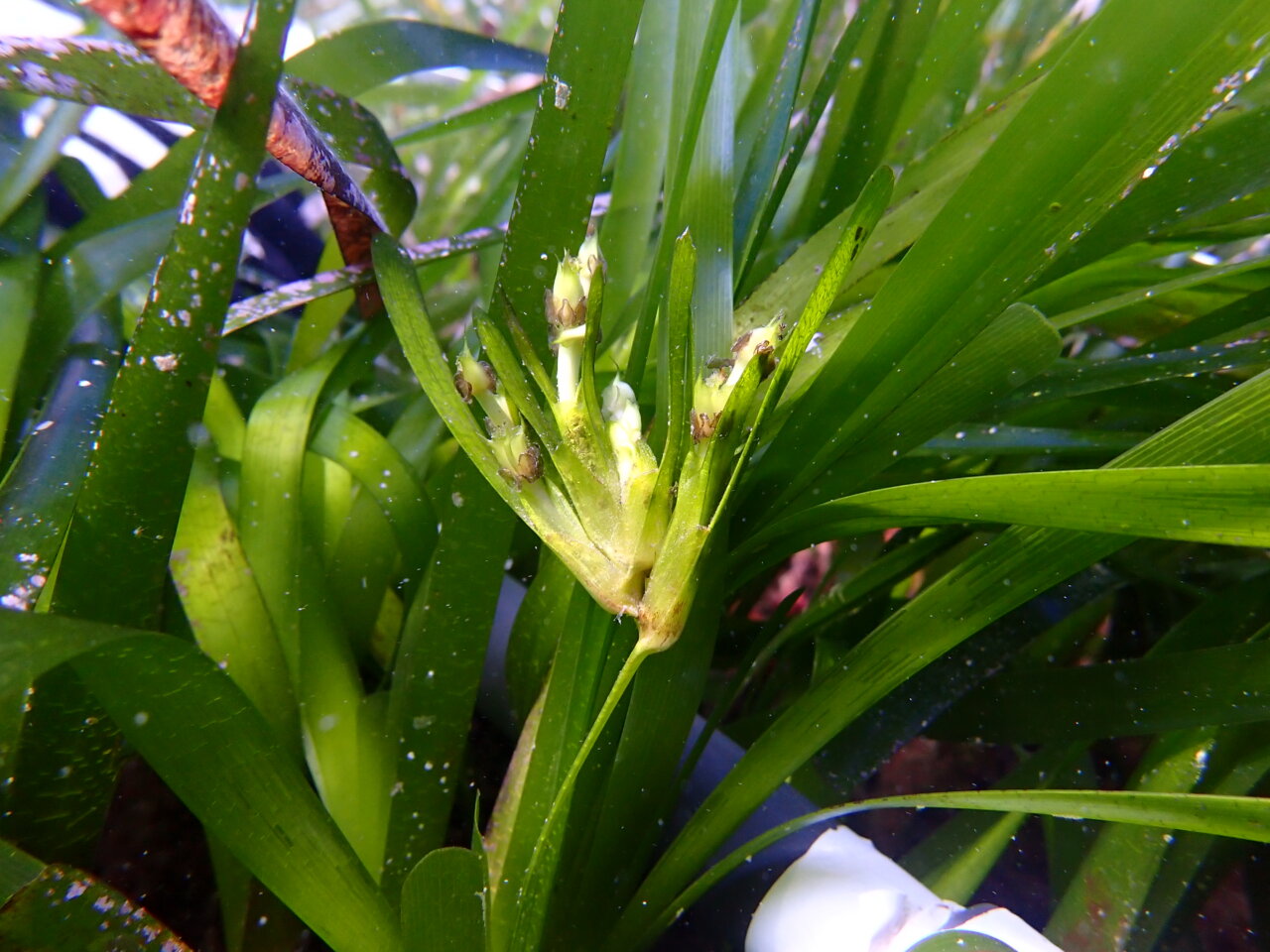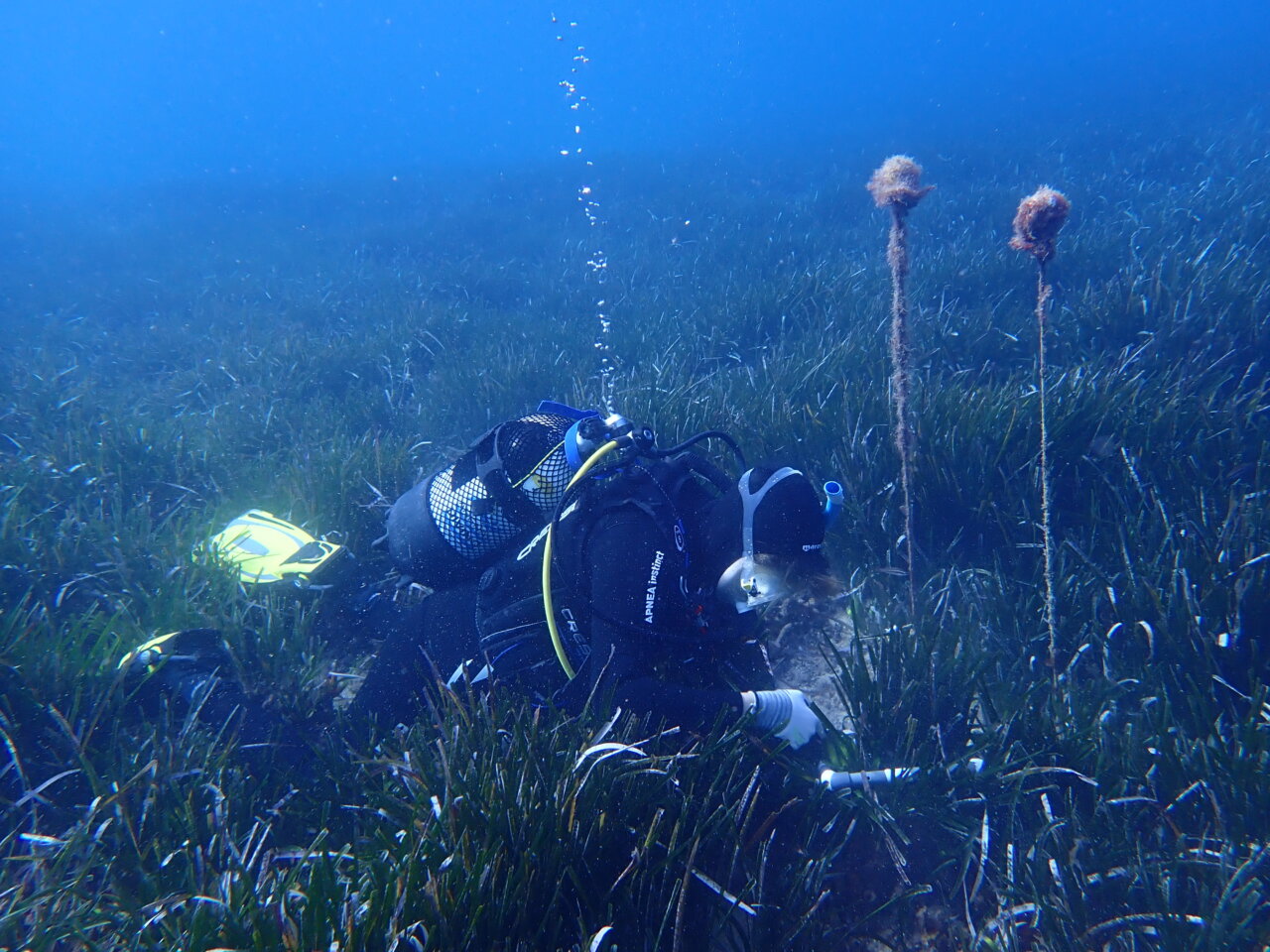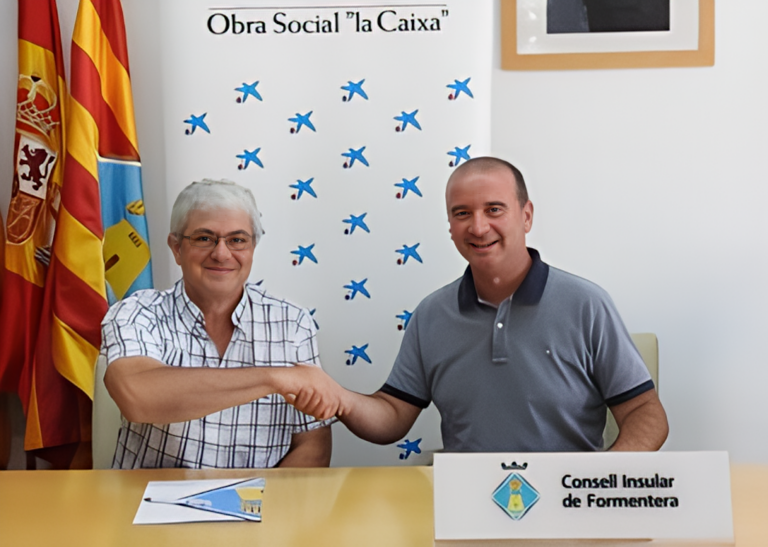A team of scientific divers has installed this week a temperature recorder in the monitoring station of Xarxa Posidònia located in Cala Gració, at six meters deep, in order to continuously monitor the thermal evolution of the water in an area particularly sensitive to the warming of the Mediterranean.
The device, financed by Salvem sa Badia de Portmany, will make it possible to obtain data throughout the year and download the information periodically, thus improving the ability to monitor the state of the Posidonia meadow.

The decision to place the thermometer at the first station was made because at that depth the water is more vulnerable to temperature increases, a key factor in assessing the health of the posidonia. To obtain a more complete comparison, the team also installed a second thermometer at 15 meters, whose data will allow them to study the thermal differences between water layers over the next year.
The placement of these devices was also used to complete the annual measurements and checks carried out by Xarxa Posidònia at this monitoring station. This trip had been postponed several times due to bad weather and low visibility caused by the DANA Alice and other recent storms, which forced to repeatedly suspend the planned dives. On this occasion, for safety reasons, the expedition was carried out without volunteers, and only three scientific divers participated, including the project coordinator, biologist Elena Burgos.

What was discovered during the expedition
During the dive, debris such as plastic bottles and car covers were detected, and several specimens of spiny nacre (Pinna rudis) were observed, as well as a posidonia oceanica bloom at each station. Burgos described this flowering as a “very anecdotal” phenomenon given its infrequency.

This intervention concludes the year’s field work, which completes the tasks already carried out in September at the Cala Bassa station, where volunteer divers were able to participate. From now on, the technical team will focus on processing the data to prepare the annual report, scheduled for next year, which will assess the state of the meadows in the bay of Portmany.
The expedition once again had the logistical support of Arenal Diving, the company contracted for the boat service, which provided the diving equipment necessary to carry out the operation.
Continue reading:
-
Posidonia returns to the beaches of Sant Josep to care for the sea and stop erosion
-
Posidonia takes a century to regenerate: containing human activity is key, warns researchers
-
Ibiza, the island with the most anchoring on Posidonia: concern grows over the impact on the meadows
-
Unusual bleaching of posidonia in Ibiza worries scientists and divers
-
Ibiza as a thermometer: the sea reveals worrying signs of transformation
-
Garbage and dead lizards: Es Vedrà, on the verge of environmental collapse
-
From “cat god morons” to “trespasser traps”: the phrases that ignite environmental controversy in Ibiza
-
Pacma alerts about the massive death of cats in Ibiza’s Cepad











